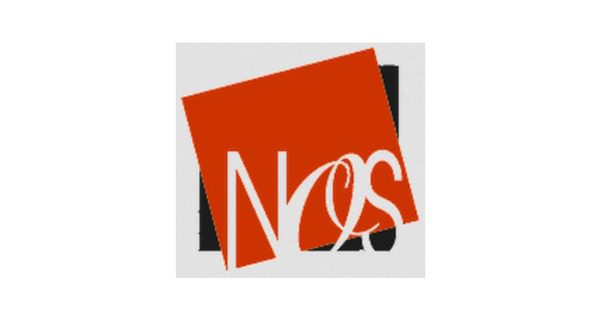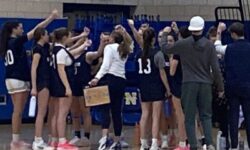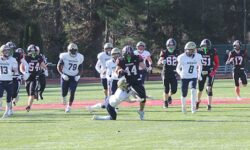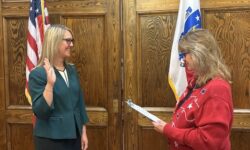By James Kinneen
Hometown Weekly Reporter
Like so many other events during the time of COVID-19, the annual Needham Open Studios, originally scheduled for May 2 and 3, had to be postponed and rescheduled. But while the newly-scheduled date for the event is October 24, organizers have opted to hold a Virtual Open Studios as well, at Needhamopenstudios.com, for artists to show off their work and workspaces.
Online, there are sixteen different Needham locations where visitors can see an artist’s workspace and their art, read a description of their work, and be taken to the artist’s personal website. For some artists, one can also watch a video of them working. For example, at location six, there is a video of Naomi Wilson doing sumi-e, a type of Japanese brush painting.
“The Virtual Open Studios is an extension of what would have happened this past weekend, so since you couldn’t come see us in person, you can come on the website and see as much as you possibly can that’s there,” explained Jennifer Yogel. “We are trying to engage people and give people the feeling of what they might have seen, had they had the opportunity to have physically been there.”
While the virtual open studios allow people to see that artists and their work far easier than traveling in person, it does come with drawbacks. Yogel noted that the open studios used to showcase talented people other than the artists, as often, live performers who may be related to the artist showcasing their work would play music for attendees. But, more so than that, some media translates much better to a two-dimensional space than others.
“Seeing and touching and trying on handmade art and having the opportunity to meet the person who designed and created it is the ultimate. It is the preferable situation. Many of the visitors that come are returning to support the artists that they’ve met, and also the community, so they’re familiar with your work. It really can’t be replicated virtually. You can see it, but you don’t really get to see the detail. So, that’s hard. And some things that are two-dimensional, like paintings, prints, and photography, are a lot easier to read virtually. But there are a lot of things that aren’t. I’m a jewelry designer, so you can look at my work and see it, but it’s hard to get a true depth and width and to see the sparkle online. The same thing goes for pottery and sculpture, where you’re talking about a three-dimensional piece of work, but you’re only getting a one-dimensional view of it. Obviously, in person would be the best, and it will be - hopefully.”
While work like John Lechner’s children’s book illustrations and Nancy Motley Walton’s watercolor paintings (especially her image of Notre Dame burning) look great online, others are frustratingly lacking. For example, at location 12’s “All About Leaves,” we see Leah Sauter and Cathy Byrd’s birdbaths made using real leaves and concrete. While there is an image, it is something that would be fascinating to examine in person.
At location 14, Steven Branfman of The Potter’s Shop and School says, in part, about his ceramics: “I see the surface of my pots as a skin that defines and communicates the volume and presence of what is underneath. My surfaces define the shape with textures that expand and grow during the forming process. I am influenced by the visual quality of the landscape, rock faces, cracks in the sidewalk, tree bark, colors of the earth and sand, moss, river beds, waterfalls, sunsets, the undulating path of a mountain range. I am influenced by the tactile nature of the air and natural and man-made surfaces. I am influenced by the smells and tastes of the cuisine that we welcome.”
When someone talks this much about the tactile nature of their work, a photograph online cannot do it justice.
All the art was made and submitted before COVID took hold, so while the artist’s individual websites and social media pages may show work inspired by the virus and lockdown, the work on the virtual tour will not. While Jennifer is hopeful that the live event will happen in October, she noted that the effects of cancelling theirs and other events and shows have had a terrible impact on the art community.
While many people think of more time at home as a great opportunity to make art (the same way people talk about finally having time to write their novel), the virus and lockdown are actually destroying the art community. Every show lost means a loss of income at a time when many people were buying art, and many artists needed the income.
“We don’t know what the future holds. I can just tell you this has been really devastating to this community. The galleries are closed, things are cancelled, and we don’t know if they’re going to come back. We don’t know if galleries are going to come back. And this is the time of year when people are buying gifts for graduations and Mother’s Day, and they refresh the spring and summer wardrobes. Graduates are still graduating. They’re starting new jobs and moving to new apartments and need new art to furnish them. The artists rely on this income to keep them supplied and to prepare them for the next lineup of fall and winter, holiday shows. Show fees are paid six to nine months in advance. So without the income we would be getting from these current spring shows, like the Needham Open Studios, we don’t have the currency or savings to buy our materials and sign up for shows going into the next season, which makes it very hard to plan for the future. You don’t get the exposure. There are many artists that rely on this as their main income. Some of us have second and third jobs, they’re raising families, they’re retired, and if this is your main livelihood, you’re suffering to pay rent and the mortgage, you’re struggling to pay all your bills. This is devastating.”
While not the same as a live show, Needham artists are trying to remedy the situation by holding a Virtual Open Studios. Considering how much time people are spending online already, it’s well worth a look.






















